Products You May Like
It was the photo I noticed before the post. Jared Fenstermacher, 37, cut a striking image: Lean build with fierce expression posed comfortably inside a trail shelter. In the post, Jared explained he had hiked 1/3 of the Appalachian Trail, or 700 miles, from Georgia to Kent, Connecticut prior to sustaining a spinal cord injury and now was determined to finish the formidable remaining 1,400 miles to Maine.
On Facebook, Jared wrote that he was ready to face what seemed like an impossible task, even if it took years.
“I’m looking for a few good hikers who would be willing to support me on a section hike,” he wrote. “We can do this together.”
While it’s common for hikers to post requests for hiking buddies, I hadn’t seen many adaptive hikers looking for partners. I had so many questions. How could someone adaptively hike such a notoriously difficult trail without, well, walking? If Jared was brave enough to trust a stranger with his dream, and maybe even his well-being, I decided, I was willing to be that stranger. After some reflection, I sent Jared a personal message conveying interest. As a kind of hiking CV, I told him about my past adventures on the Wonderland Trail in Washington, Mt. Blanc in central Europe, Pictured Rocks in Michigan, and a 70-mile section hike on the Appalachian Trail in Virginia. In return, he shared a story of his own.
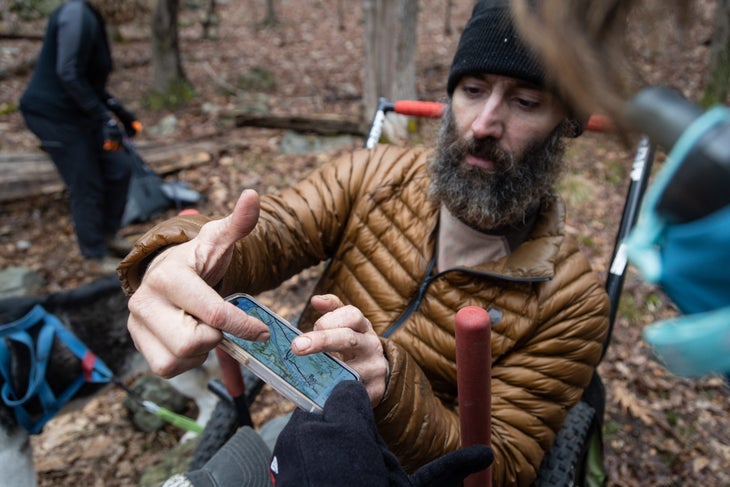
When Jared tells the story of the accident that paralyzed him, he speaks in numbers, fitting for a former accountant. In August of 2016, when Jared was 31, he was hit by a truck while cycling solo across the country for charity. The ride was in honor of his grandfather, who had taught Jared to live with no regrets.
“Four years later, in 2020, I took his advice and finished the last 900 miles with my hand cycle, which takes double the time as a regular cycle. I ended up raising $17,000 for a cancer respite program. Now that that’s behind me, I’m going for the trail,” he said.
Two months later, I flew into Hartford, Connecticut, where I met the rest of the support team, including Crystal, a nurse with spinal cord rehabilitation experience, and Emily, a Connecticut-based backpacker who had hiked the Appalachian Trail in 2021. Our trio traveled together to meet up with Jared, or “No Fear” if you go by Appalachian Trail names, and his service husky Titan.
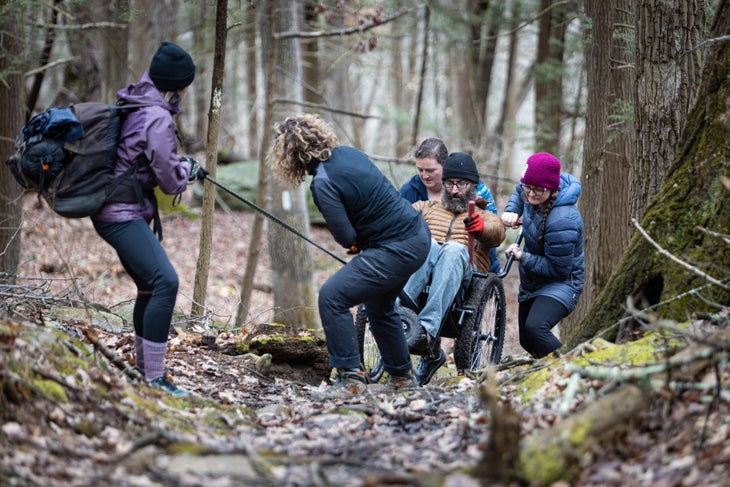
Our plan was to start at the exact spot in Kent where Jared left off prior to “getting hurt,” as he nonchalantly refers to his accident. We would haul gear and physically support Jared as he led the group in various technical adaptive hiking maneuvers.
For wider paths with smaller logs and stones, Jared would hike on his own or with Titan using his GRIT Freedom Chair—an all-terrain wheelchair that he operates with levers. For steeper obstacles, we’d attach a rope to the front wheel of the chair and pull while Jared exerted considerable effort on the handles and gears. For stepping stones or stair climbs, Jared would come out of the chair and use his triceps to scoot up or down. On narrow sections, two people would support Jared as he took slow steps. Full body carries were to be the last resort option, when it was not feasible to attempt any supported maneuvers.
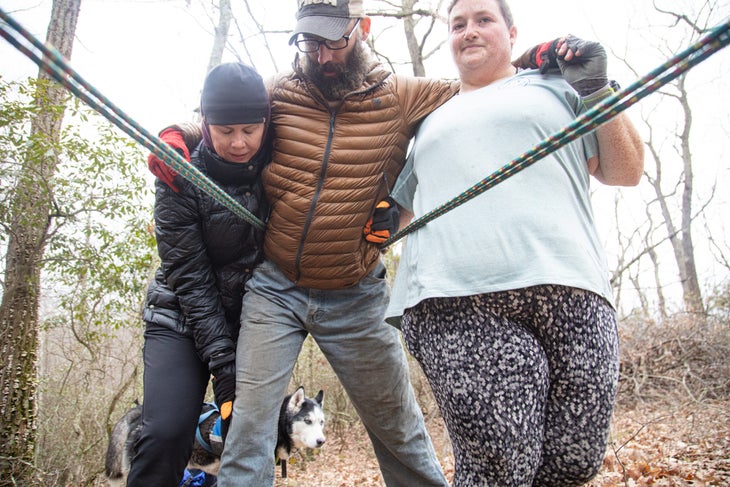
Once in Kent, our first task was to complete a small shakedown hike, .3 miles on a bouldery, steep uphill to the Mount Algo shelter. It was a chance to see how we worked together, to time our pace, and to learn various maneuvers for aiding Jared over difficult terrain. Chrystal, with her wheelchair transfer knowledge and physical strength, took the lead while Jared directed the team through steady, practiced, instructions. It took seven hours to complete the short distance to the shelter. Before his accident, Jared could have covered 20 miles in the same amount of time. “I was carried at times, walked on my hands, walked holding onto two shoulders,” he wrote. “This is insane. I refuse to quit.”
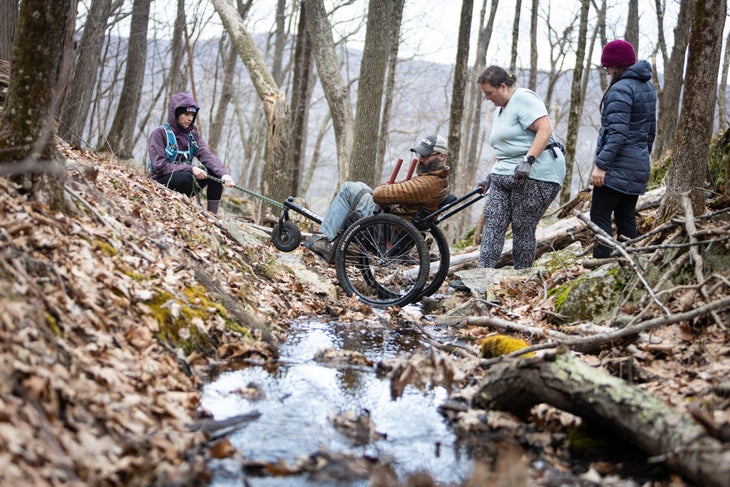
As I was coming to understand, the challenges Jared faces en route to his dream aren’t just unusual. In a manner of speaking, they’re unique. As Crystal and Jared explained to me in the shelter at night, every spinal cord injury is different and creates different complications for the person who sustained it. In Jared’s case, his vertebrae pressing into his spinal cord resulted in a T5 injury, which places the damage right at the top of his stomach. On the American Spinal Cord Injury Association (ASIA) scale, which determines how much return and sensation a person has, Jared falls in what’s known as Asia C, or the incomplete mid-range. Jared retained some motor function, but more than half of the key muscles below his point of injury are unable to move against gravity.
There were many effects from Jared’s injury; inability to walk unassisted is only one of them. Loss of bladder control is another, requiring Jared to catheterize himself every four hours, each time with a new catheter to prevent infection, and leaving him with a constant, irritating feeling of having to urinate without the release of actually doing so. Clonus, a condition which causes involuntary muscle contractions leading to muscle tightness and pain, strikes Jared every few minutes, requiring him to take time, and sometimes use hand pressure techniques, to ease the shaking. During standing maneuvers, tendon tightness threw him off balance and required us to physically help him place his feet.
No Fear took all of it with his trademark grit. As he explained it, life since his injury has been a crash course in working through tough problems.
“When I was first hurt, it was so demoralizing,” he said. But he’s always been stubborn: “No big deal—our bodies are meant to work … I take my chair outside and hit the road. I ride bikes, hike trails, and climb mountains, all with my arms, in hopes of inspiring you to do it with your legs.”
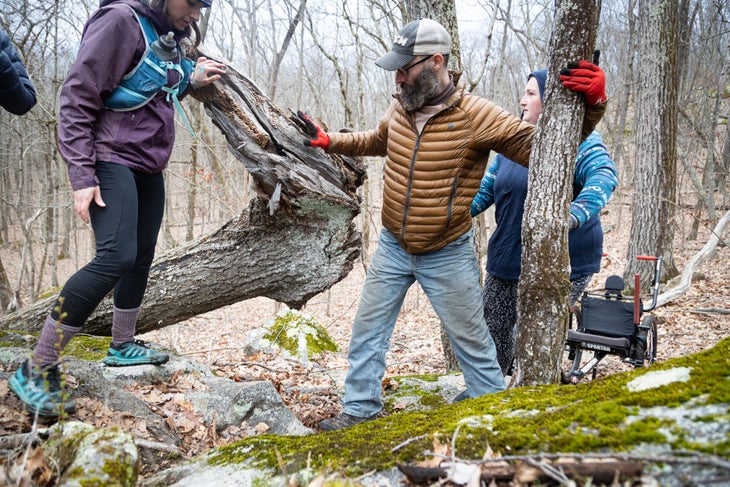
On our second morning on the trail, two fresh volunteers joined Jared, Chrystal, and I for the descent from Mount Algo, crossing over the official starting point of the hike. We worked smarter than the day before. Instead of carrying our packs up hills, we had a designated porter tote them so the rest of us could be free to support Jared. Even so, after the sun went down, we had to call in extra help. A team of high school boys arrived to carry Jared over a treacherous area. By day three, we climbed again, finishing with a smooth, flat section of trail into camp. That night we bonded the way people only bond on the trail, telling stories and teasing each other over dinner.
Nicole, an ultrarunner, met us on day four. Five support people, it turned out, was the sweet spot: Jared was able to safely direct the team hiking at a quickened pace. At the end of the day, the trail smoothed out, allowing Jared and Titan to do what they do best: mushing-style running where Titan, secured by a leash and harness, surged forward pulling both Jared and the GRIT chair.
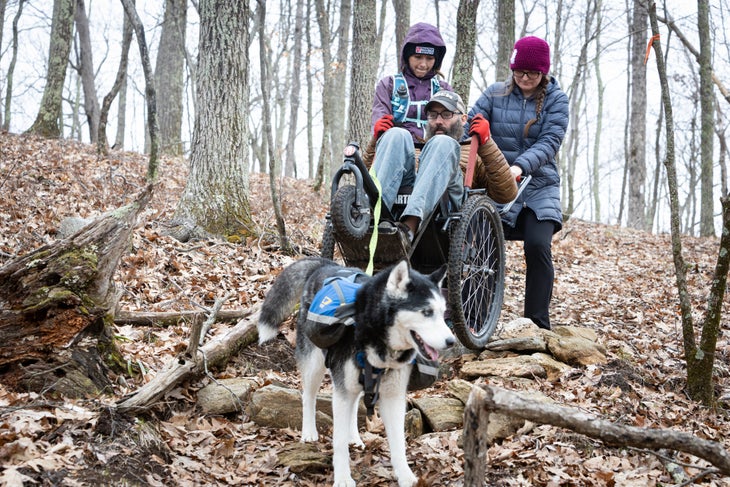
“For guys like Jared, it’s in their DNA to take risks,” Nicole told me. “Oftentimes, people instinctively try to protect the disabled. They don’t want them falling or being in pain. He craves extreme physical challenges. Why get in his way?”
If No Fear was hitting his stride, I was falling off mine. I told Emily I was reaching my physical and mental breaking point. The heavy lifts and falls were taking a toll on my body. Beyond that, I told her, I felt increasingly worried that I would lose my footing and injure myself, or Jared.
“There is an unwritten code of conduct on the Appalachian Trail. Each hiker must look after themselves,” Emily said. If I couldn’t take care of myself, I wouldn’t be able to offer Jared the support he needed.
On day 5, after completing 3 official miles of the comeback hike, a cold rain fell. We got as far as Skiff Mountain Road and found ourselves facing down the infamous St. John’s Ledges. Locals had warned us about these slabby, rocky ledges, which for Jared would require rock climbing gear and additional help to surmount. I told Jared I simply didn’t have it in me to go through another technical climb.
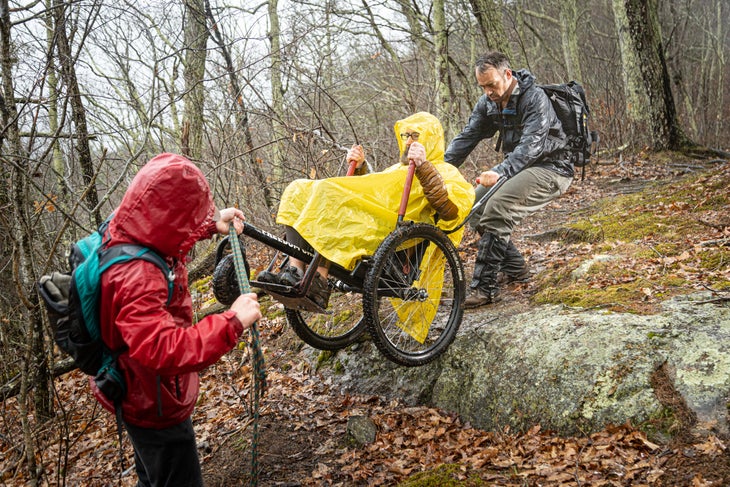
Soon after I said my goodbyes, the rest of the team reached an impasse. Poor weather had soaked the rock ledges, and Jared needed a bigger crew to climb them. He wrote on Facebook: “I’m not going around St. John’s Ledges. You either hiked the whole trail, or you didn’t. I’ll never let my disability stop me from completing my life’s goals.”
Jared went on to hike two more days, skipping the 2-mile section that included St. John’s Ledges with plans to return to finish it this fall. In total, he and the team completed 10 miles.
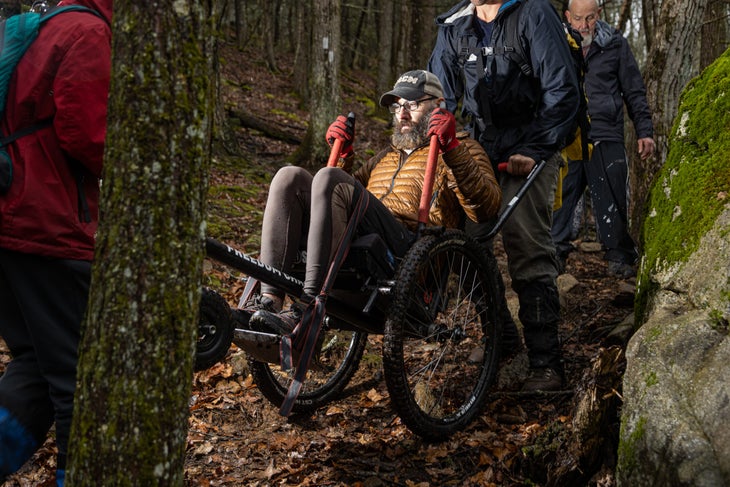
In May, Jared attended Appalachian Trail Days with 5,000 other hikers in Damascus, Virginia and hiked to McAfee Knob. Back at home in Bloomsburg, Pennsylvania, he is busy preparing gear and teams for his next section hikes. Reflecting on the Connecticut section, Jared believes what lies ahead in the north won’t be easy.
“After Connecticut, I have a better understanding of the obstacles in the rocky path ahead that motivates me to work harder, adapt, and improvise to meet the challenge,” he says. “I’m telling those rocks and the world, the challenge is accepted.”
If you are interested in helping Jared fulfill his AT comeback quest and have the time and energy to recruit a team of 6 backpacker friends for a fall or spring section, Jared wants to hear from you.
